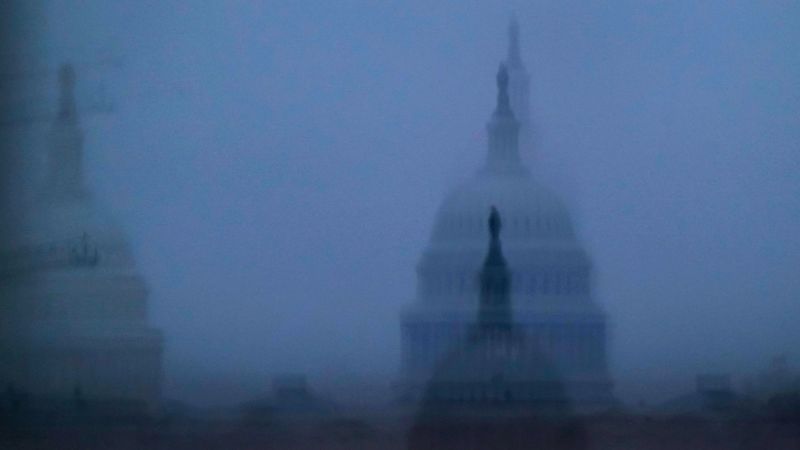Copyright Cable News Network

The federal government shutdown is now entering its fifth week and could soon set an all-time record, with little sign of either side backing down or really even feeling much pressure to do so. But that could start to change in the coming days – as some of the previously delayed impacts of the shutdown take hold and some other key deadlines and dates loom. Americans starting to feel the consequences of the shutdown should bring at least some pressure to bear on lawmakers. Let’s run through some key events on the timeline, and what each could mean politically. Today: Air traffic controllers miss first full paycheck The date of the first missed paycheck for federal employees differs for different workers. On Tuesday, it’s air traffic controllers missing their first full ones. These officials, who are considered essential workers who must work during the shutdown, have already been under immense pressure amid a series of mistakes and increased scrutiny all year. Staffing shortages have already caused flight delays, and there is fear that missing paychecks will exacerbate things. The disruption for traveling Americans could force lawmakers to act. That’s more or less what put the final nail in the longest partial government shutdown in history, the 35-day shutdown in late 2018 and early 2019. Ten air traffic controllers decided to stay home, temporarily halting travel at some major hubs and leading President Donald Trump to agree to a three-week pause in his border wall demand. (Trump and the GOP eventually gave up.) October 31: Military paychecks This could be the first time in history that members of all military branches will miss a paycheck during a shutdown, according to the Bipartisan Policy Center – though that distinction could get pushed to November 15. The Trump administration reallocated $8 billion to cover October 15 paychecks. Last week, it announced a $130 million gift from an anonymous Trump “friend” to help pay service members (though that would only cover about $100 per person and raised its own legal questions.) Over the weekend, the administration suggested other maneuvers could cover the troops until November 15. Paying the troops is a politically sensitive subject – the kind of thing that could lead members of both parties to feel pressure to find an offramp. But it’s possible it could weigh more heavily on Democrats, for a few reasons. One is that they are the ones making an extra policy demand during this shutdown. And the other is that they might worry Trump would use this as part of his efforts to politicize the military. Trump has repeatedly in recent weeks sought to pit the military against Democrats, including blaming them for jeopardizing military paychecks. “And I want you to know that despite the current Democrat-induced shutdown, we will get our service members every last penny,” Trump told members of the Navy earlier this month. He has twice blamed Democrats for standing in the way of a military pay raise, citing “this little gnat that’s on our shoulder called the Democrats.” Nov. 1: Obamacare premium increases and SNAP benefits This could be the most pivotal day. That’s because it joins two major impacts: millions of Americans seeing their Obamacare marketplace premiums rise sharply as open enrollment begins, and 42 million people suddenly being at risk of losing critical food aid through the Supplemental Nutrition Assistance Program, or SNAP. (The SNAP impact arrives alongside potential cutbacks in other programs for low-income Americans like Head Start). On SNAP, some Senate Republicans like Josh Hawley of Missouri are pushing for a stopgap measure. But Senate GOP leadership is wary that this could hurt their leverage by continuing to delay the worst of the shutdown’s impacts. Democrats, meanwhile, insist they will press forward in their shutdown strategy regardless. “We understand this is not easy, and this is going to be painful,” the No. 3 House Democrat, Rep. Pete Aguilar of California, said when asked about SNAP, arguing that Trump is choosing to make things more painful by not allowing SNAP benefits to be funded. The beginning of open enrollment could conceivably go two ways. On the one hand, people seeing their premiums suddenly double or rise even more could ratchet up pressure on Republicans to negotiate over the enhanced Obamacare subsidies extension that Democrats are demanding. On the other, the arrival of the deadline could lead Democrats to reason that they fought the good fight and can move on, believing they emphasized how Republicans now own those premium increases. Nov. 4: Election Day We’ll see a handful of elections on Tuesday, including governors races in Virginia and New Jersey, the New York City mayoral race and a redistricting ballot measure in California. Virginia is the one where you might expect to see shutdown impacts because so many federal workers live there, but the shutdown hasn’t been a huge focal point in that or any other campaign. At the same time, if Tuesday’s results swing unexpectedly in one direction or another, it could lead the side that underperforms to wonder if they have as much political strength as they thought. Democratic Rep. Abigail Spanberger is considered the favorite in the Virginia governor’s race, which history suggests should favor Democrats given Republicans won the White House the previous year. (These races usually swing in the opposite direction of the presidency.) If Spanberger wins big, Democrats could reason they are on firm footing and should hold strong on their demands. If either this race or the New Jersey governor’s race are closer than expected, perhaps you’ll see some Democrats start to worry more about overplaying their hand. Nov. 5: When it becomes the longest shutdown ever If nothing else spurs lawmakers to come to an agreement, maybe ignominy can? At this point, the shutdown will surpass the 2018-19 version as the longest in history. Nov. 21: The House-passed CR expires Just how intractable are things? So intractable that it’s possible the House might have to pass another stopgap funding measure (or continuing resolution) because the shutdown will have outlived the one it originally passed but the Senate never did. Before the shutdown began, the House passed a continuing resolution that would have funded the government only through November 21. What would that mean, practically speaking? Well for one, the House would finally have to come back in session – something Speaker Mike Johnson has resolutely avoided. At that point he would seemingly have to swear in Democratic Rep.-elect Adelita Grijalva of Arizona, who won a special election more than a month ago but whom Johnson has refused to swear in. Grijalva would soon become the crucial 218th signature for the Jeffrey Epstein files discharge petition, forcing that issue. And perhaps bringing the House back in session might lead to more pressure to negotiate over the Obamacare subsidies from Republicans like Rep. Marjorie Taylor Greene of Georgia and others who have suggested the GOP faces political peril over this issue. Thanksgiving The holiday is set for November 27, but travel will begin days earlier. It’s at this point that any lingering problems with airports, other travel and relevant government services would really start to come into focus. Holidays can also prove powerful motivators for lawmakers to get their business done – so that they can spend time with their families without the threat of being pulled back to work.



